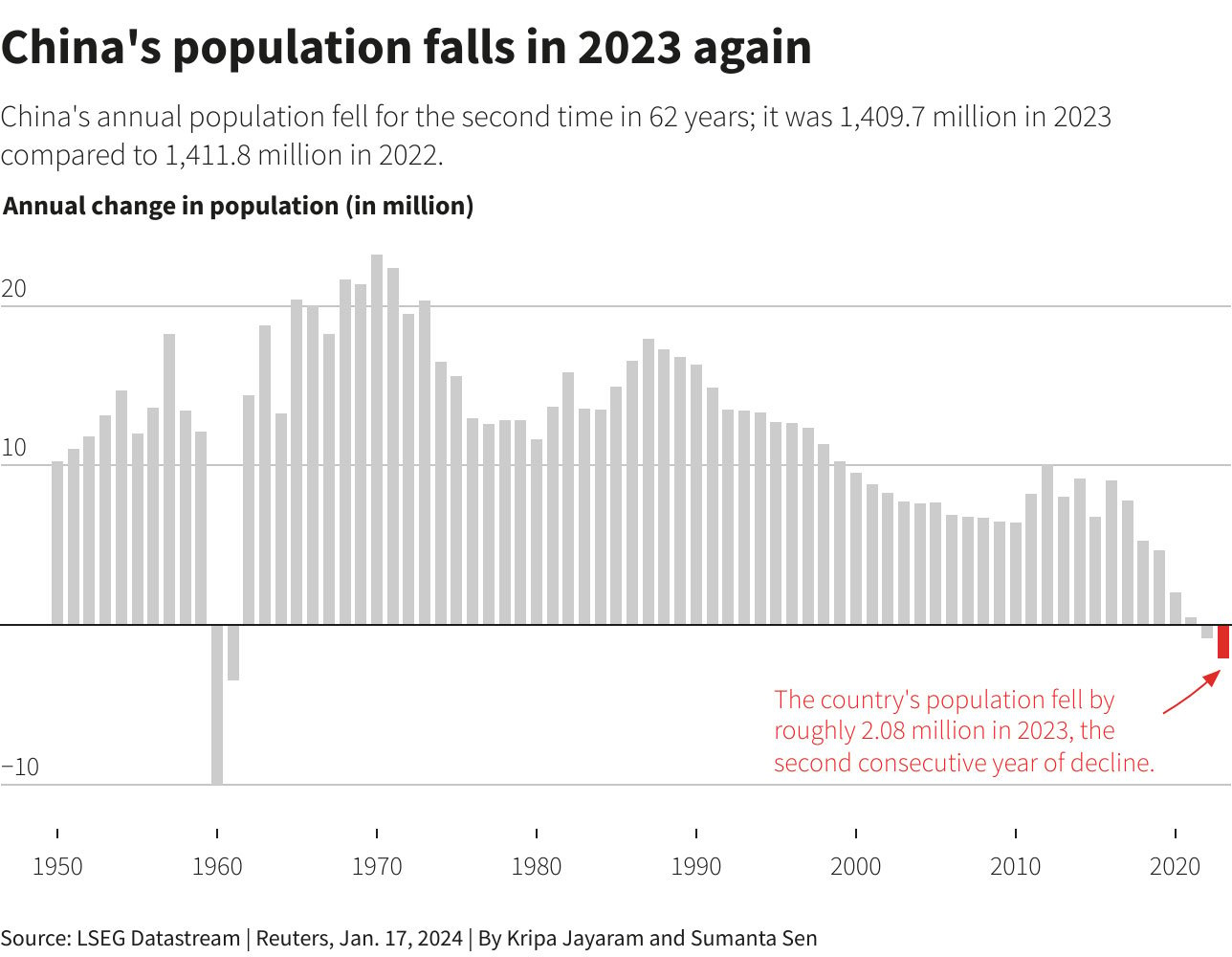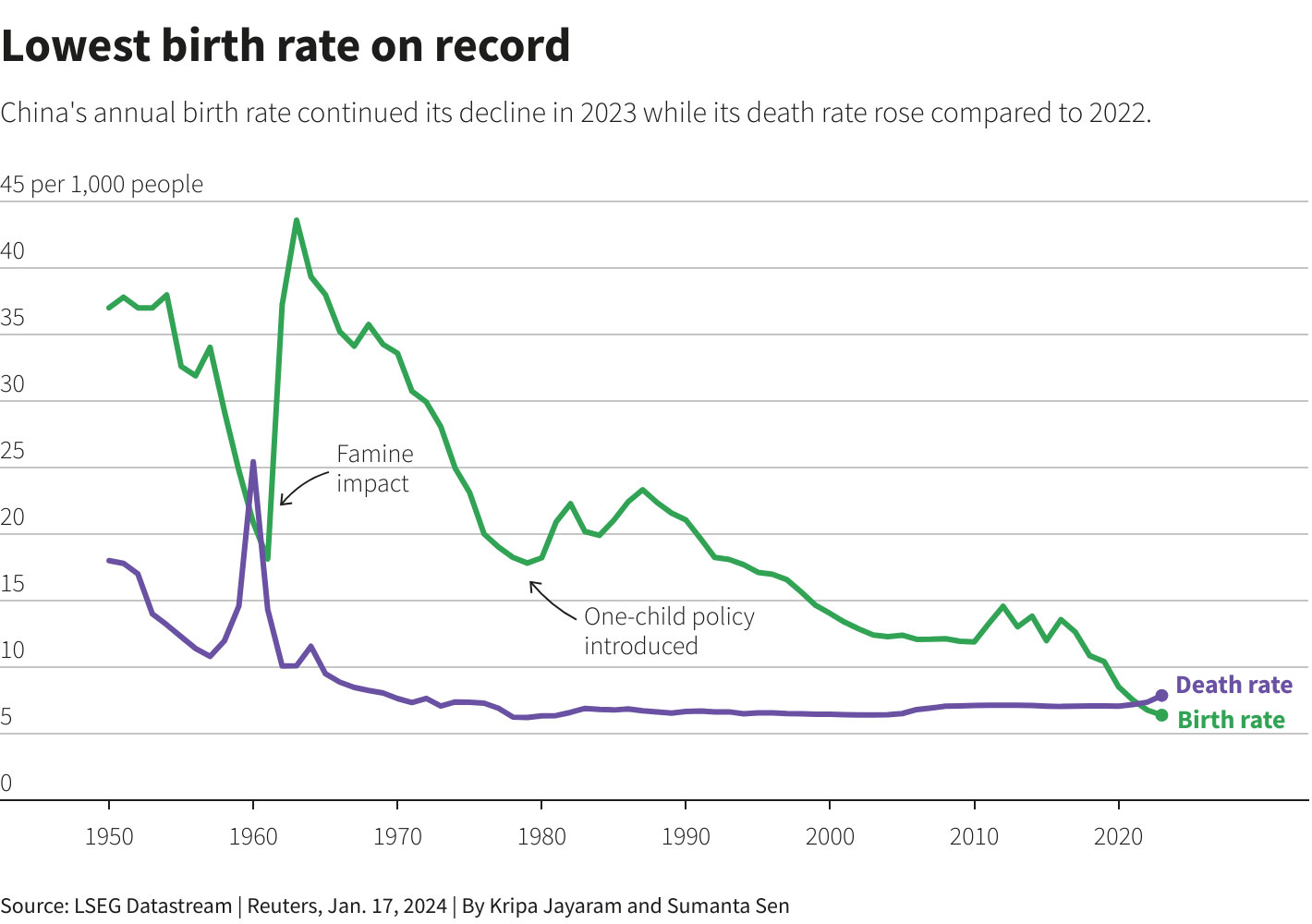The National Statistics Office reported a drop of 2.08 million, or 0.15%, bringing the total population to 1,409b
China's population has declined for the second year in a row, marking a significant demographic shift with profound implications for the nation's economic trajectory. Reuters reported.
The National Statistics Office reported a drop of 2.08 million people, or 0.15%, bringing the total population to 1,409 million in 2023. This decline comes after a record birth rate and a rise in deaths from COVID-19 after the lifting of strict confinements. .
The COVID-19 surge contributed to a 6.6% rise in total deaths, reaching 11.1 million, the highest death rate since 1974. New births fell 5.7% to 9.02 million, with a record birth rate of 6.39 births per 1,000 people.
China's birth rate has been declining for decades due to factors such as the one-child policy (1980-2015) and rapid urbanization, which makes raising children more expensive.

Economic challenges, including high youth unemployment, falling salaries for white-collar workers, and a real estate crisis, further deterred family planning in 2023.
The data raises concerns about China's economic prospects, indicating declining growth potential due to a shrinking workforce and consumer base. As elder care costs rise and retirement benefits put pressure on local governments, the challenges of an aging population loom large.

The aging of the population is a growing concern: people aged 60 will exceed 296.97 million in 2023, representing 21.1% of the total population. The pressure on the pension system is expected to create financial challenges, with projections indicating a deficit by 2035.
Efforts by local governments to boost birth rates through measures such as tax deductions and longer maternity leaves are facing challenges, prompting calls for a unified nationwide family subsidy scheme. Reluctance to have children is influenced by factors such as high childcare costs, labor market uncertainty, gender discrimination, and traditional family expectations.












